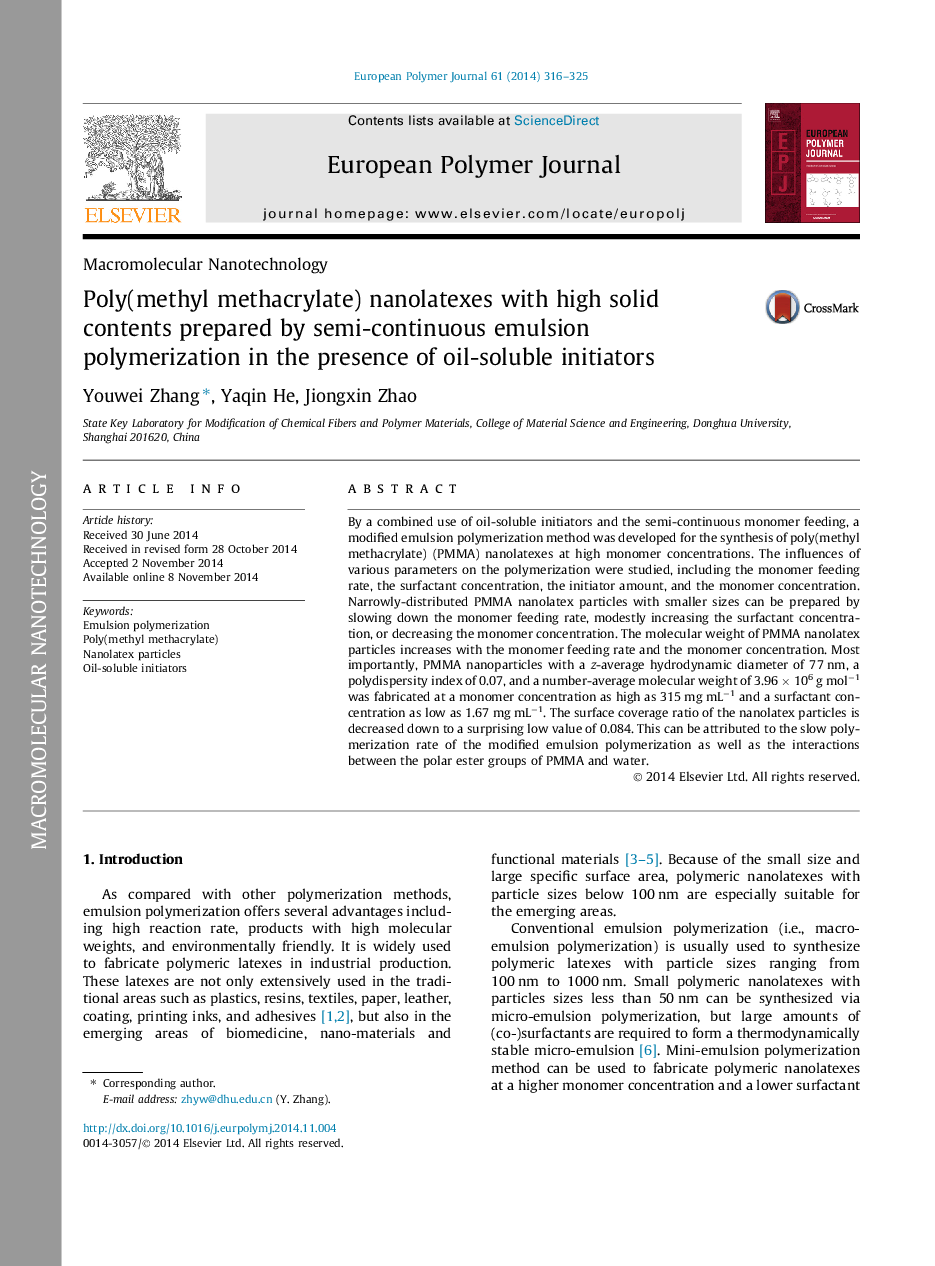| Article ID | Journal | Published Year | Pages | File Type |
|---|---|---|---|---|
| 1397998 | European Polymer Journal | 2014 | 10 Pages |
•Semi-continuous emulsion polymerization of MMA in the presence of AIBN was studied.•The AIBN amount has little influences on the size of PMMA nanoparticles.•PMMA nanolatex (〈Dh〉 = 77 nm) was fabricated at [MMA] = 315 g L−1 and [SDS] = 1.67 g L−1.•PMMA nanolatex particles remain stable at a surface coverage ratio as low as 0.084.
By a combined use of oil-soluble initiators and the semi-continuous monomer feeding, a modified emulsion polymerization method was developed for the synthesis of poly(methyl methacrylate) (PMMA) nanolatexes at high monomer concentrations. The influences of various parameters on the polymerization were studied, including the monomer feeding rate, the surfactant concentration, the initiator amount, and the monomer concentration. Narrowly-distributed PMMA nanolatex particles with smaller sizes can be prepared by slowing down the monomer feeding rate, modestly increasing the surfactant concentration, or decreasing the monomer concentration. The molecular weight of PMMA nanolatex particles increases with the monomer feeding rate and the monomer concentration. Most importantly, PMMA nanoparticles with a z-average hydrodynamic diameter of 77 nm, a polydispersity index of 0.07, and a number-average molecular weight of 3.96 × 106 g mol−1 was fabricated at a monomer concentration as high as 315 mg mL−1 and a surfactant concentration as low as 1.67 mg mL−1. The surface coverage ratio of the nanolatex particles is decreased down to a surprising low value of 0.084. This can be attributed to the slow polymerization rate of the modified emulsion polymerization as well as the interactions between the polar ester groups of PMMA and water.
Graphical abstractFigure optionsDownload full-size imageDownload as PowerPoint slide
